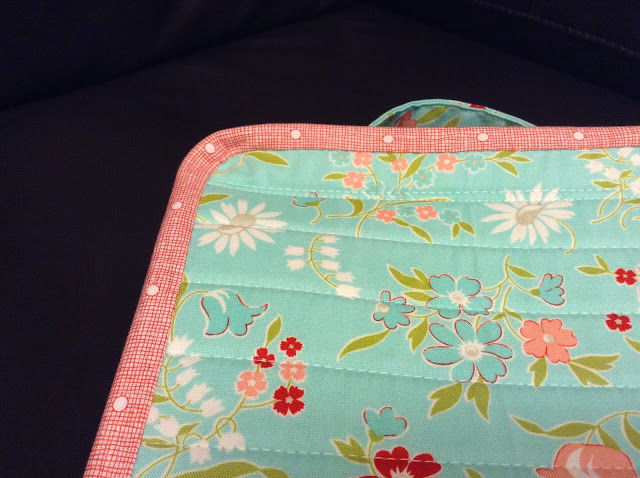I have been meaning to make some cord keepers for my sewing machine power cords and foot pedal cords for ages. Frustrated by elastic bands that dry out and no longer have any elasticity, I thought it was about time I hunted out a few scraps and got to it.
These are super quick little makes if you have some scraps of fabric and interfacing (or wadding to hand). The longest parts for me were hunting out supplies from my not so easily accessible boxes and deliberating over what size I wanted them to be. There are other tutorials around but the sizes of the keeper vary quite a bit, so I wasn't sure how big to go (or not).
In the end my little keepers measure about 2.5" x 5.5" and they're a pretty good fit for the bulk of the cords. There's just one that I could, perhaps, add a second kam snap fitting to to tighten it up a little.
I thought I'd share a few pics of how I did it, in case you'd like to tidy up your own machine cords.
1. Instead of using interfacing, I wanted to quilt the outer of my keeper, so I started with a 3.5" x 6.5" rectangle of outer fabric and wadding to quilt up. Once I'd quilted it, I cut it down to 3" x 6". I cut lining fabric at 3" x 6" also, and marked rounded ends in pencil using the cardboard template I cut at 3" wide and rounded of using the plastic lid you can see. (If you just want to use interfacing, cut everything at 3" x 6".)
2. I put the lining fabric face down on top of my quilted outer and pinned. (I made four keepers as you can see in the photo). Stitch a quarter of an inch seam around all four sides, leaving a small opening in the side for turning through.
3. Trim off and snip little notches in the curved ends to help with the turn through.
4. Turn through and press well. The top stitch about ⅛" around all sides overlapping your beginning and ending stitches to secure.
5. You could stitch velcro on for the closures, but I liked the excuse to break out my kam snaps tool. I just positioned the snaps in the centre of the rounded ends and after a little muscle power they were done. Just pay attention to the positioning of your cam snap pieces so that they meet where you want them to.
And, hey presto, four pretty cord keepers!
Just the job!





























